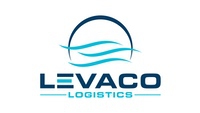Our world is more connected than ever and answering to the demands of globalisation, products are traded and transported to all corners of the world.
Sending cargo internationally
Once a transaction is done, the logistical process is set in motion, and you’ll need to consider the best shipping method for your cargo. Today sea freight options compete with other transportation methods such as air, road, and rail transport. Even with the different possibilities, sea freight remains the preferred alternative.
A long history
Sea freight is by far the oldest option for transporting goods. And, since oceans and waterways cover most of our planet, it is also one of the most accessible. The earliest references to sea freight go back more than 5,000 years; when trade routes were formed along the Arabian Sea between what is now known as India and Pakistan. Bandit attacks made overland travel dangerous, which encouraged sailors to carry goods overseas.
The modern-day foundations of ocean shipping were laid on 26 April 1956, when the American entrepreneur McLean placed 58 containers in a converted tanker to transport goods from New Jersey to Texas. Since then, the maritime industry has developed a lot and transport options have evolved. Today, more than 90% of all goods shipped internationally are transported by sea.
Cost-efficient
Sea freight has many advantages over other modes of transport. However, one of the most obvious ones is its economic benefit. Of all the transportation methods, sea freight is by far the most cost-effective. Especially for large volumes of products, over long distances. And smaller shipments can be consolidated with other cargo to maximise a container’s capacity, which reduces cost further. Some studies show that sea freight can be 4 to 6 times cheaper than air freight. And compared to road transport, sea freight costs are generally much lower, but with comparable transit times and more reliable arrival and departure dates.
All shapes and sizes
Sea freight is the ideal way to transport large volumes of goods, as some vessels are specifically designed to carry large quantities of bulk goods or raw materials. Heavy or bulky cargo, often referred to as breakbulk or ‘Not in Trailer’ (NIT), such as large vehicles, equipment, building materials, etc. can fill one or more containers. The ability to transport these oversized products is a considerable advantage of sea freight. Transport by rail, road or air has undeniable limitations in terms of weight and size.
Go blue to go green
From an environmental point of view, sea freight is also the best option. Ships are the most carbon-efficient mode of transport because they emit fewer grams of exhaust gases per tonne of cargo carried than any other mode. These already low emissions continue to decrease as technology advances, and LNG (liquefied natural gas) propulsion is used.
Dangerous cargo
Some vessels are designed specifically to carry dangerous goods and cargo safely. The maritime industry has acquired a lot of experience in handling different types of cargo and has regulations in place to ensure the safety of the ship, the crew, the cargo, and the environment. Cargo losses due to in-transit incidents have dropped significantly over the past decades as safety and technology advances. In addition, containers are designed to be sealed and locked during transport for added security.
Other benefits
In addition to the ecological, economic, and cargo-specific aspects, sea freight has other benefits. A full-service international freight forwarder, such as Levaco, can help you navigate the advantages of sea freight. Including worldwide LCL and FCL shipping, NVOCC/container and consolidation services, full door to door service, warehousing and logistics, customs processing, supervision during loading and unloading, and insurance…
Thanks to the large volume of sea freight Levaco transports and the vast network of carriers we work with, we can offer you competitive rates, fixed space allotment and excellent tracking. Contact Levaco for more information or to discuss your specific needs.







